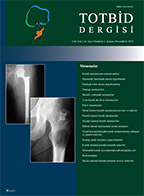
A common location for distant relapses of many cancers, including breast, lung and prostate cancer, is bone tissue. Life expectancy is reduced in patients with malignant tumours with bone metastases. Percentages of metastatic involvement of vertebrae, pelvis, femur, upper extremity and cranium are 69%, 41%, 25%, 15% and 14%, respectively. The most common reasons for referral to a clinician are bone pain in patients without a history of cancer, a metastatic lesion on the verge of a fracture and pathological fracture. The recommended radiological investigations include x-ray, magnetic resonance imaging, computerized tomography, bone scan and positron emission tomography when necessary. Metastatic tumors often require a biopsy for a diagnosis. The surgical treatment of long bone metastatic lesions or pathological fractures is accomplished by implants such as intramedullary nail, plate, megaprostheses and cement. In femur diaphyseal lesions, intramedullary nails are usually preferred. Intramedullary nails and plates in humerus diafizer lesions, intramedullary nails in tibia, plates in forearm lesions are in the front line. In surgical treatment of metastatic lesions, cement is a significant filling material for bone defects and improving stability of the bone.